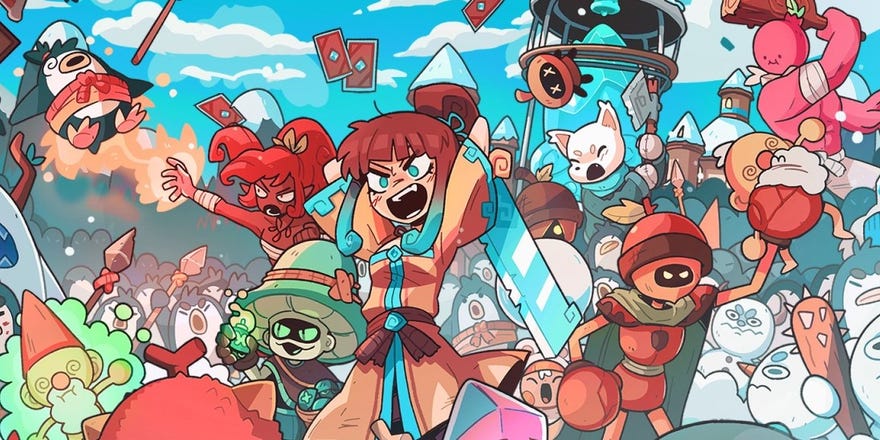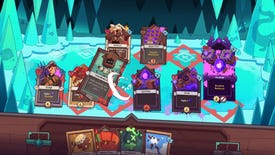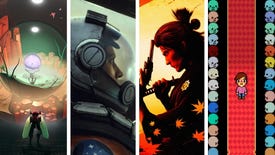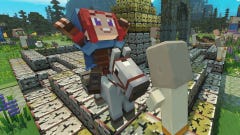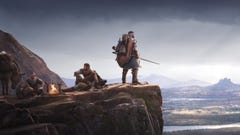Wildfrost review: cute, compelling, and chaotic card battling
Wildcard
Wildfrost is excellent at creating moments of triumph. Early on in my playthrough while I was still getting to grips with the game, I came face-to-face with a boss who got stronger when hit. Its card art had become bigger, juicier, more tauntingly malevolent, and easily could have taken out any of my team with a single hit. Thankfully, three of my team members were due to act one turn before it. The first chipped away a little of its health (its job was mostly healing) but the next doubled a stacked debuff that I had set up and turned the goliath into a giant bomb, and the effect of my two cards combined was just enough to trigger it. BOOM! My backline leader didn't even need to lift a single finger.
Playing with turn order and setting up synergies is a key part of how Wildfrost plays as a roguelike deck builder. Each individual card on the stage is part of a counter system, with both delaying and advancing them on the playing field being strategic choices. Some actions are free, like moving your cards around the stage or withdrawing them for healing, but playing cards out of your hand or shuffling your deck will pass the turn.
It took me a little while to adapt strategically to counters. What I wanted to do, from habit, was have someone at the front to tank hits, someone in the middle to do a lot of damage, and someone at the back to heal and dish out debuffs from a position of safety. Leave them there, and not move them.
But Wildfrost isn't like that! Wildfrost wants you to move around your cards, a lot. When cards act on the same turn, they play from the inside lanes outward – so whipping your weedy little debuff character to the front to make sure they hit first is the best move to make to do maximum damage. You just have to be sure to move them back before someone on the other side ticks down to their turn, and tries to punch all three health out of their soul, maybe subbing in someone who does knockback damage, or becomes more powerful whenever they get hit.

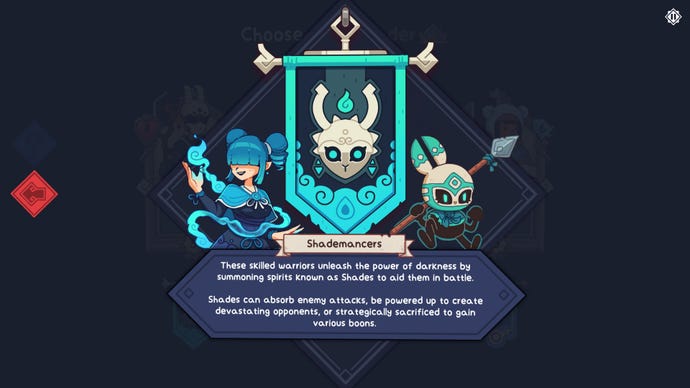
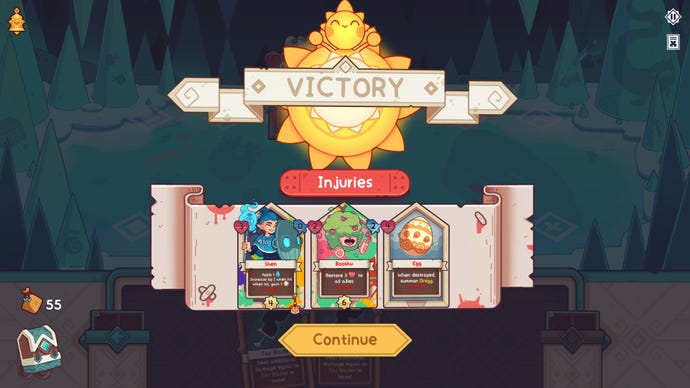
Each run begins with a randomised leader card (who if they die is game over), and a pet who counts as your first companion before heading out into the frosty winterscape. You can get two to three more companions, and the rest of your deck is made up of skills and items – direct attacks and debuffs, or obstacles and summons.There are three different main decks that lean into specific skills with themed buffs, debuffs, and other neat knacks.
I really took to the Shademancers deck, which lets you summon temporary allies – big, powerful characters built like brick walls, little pipsqueaks that exist entirely to absorb a blow, and cards that when paired with others give boons for ‘sacrificing allies’. The deck's big damage-dealing debuff of choice is 'overburn', an ability that turns enemies into timebombs as soon as the overburn number meets or exceeds their health points. While my deck builds admittedly struggled a lot of the time from a case of glass cannon, it was incredibly fun, especially when more balanced builds are harder to come by (which I’ll touch upon a little later).
There are a lot of quality-of-life details in Wildfrost that I came to appreciate the longer I spent with it. Almost all the text is comfortably large, and even the smallest in-game text on the cards becomes bigger when hovered over. Buffs and debuffs apply to the next attack rather than ticking down per turn meaning there's no way to mistime them, and there’s also an easily accessible combat log, which I found very helpful for when I miscalculated and lost an ally I wasn’t expecting to. Was that a beloved companion that just pinged off the map? Or something more disposable?
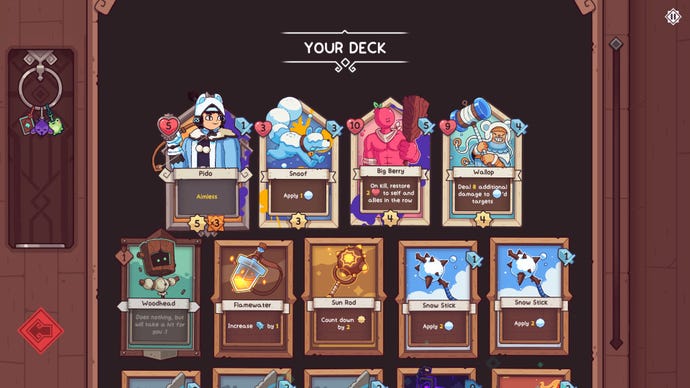
There's a lot of heart in Wildfrost's bouncy, cartoony art style, and plenty of moments during downtime to appreciate the details. New unlocks all have their own house in a homebase village named Snowdell which you can expand and visit between runs. There's a pet hut with a keeper for new pets, a hot spring to draw in new companions, and so on. These areas don't strictly do anything – you unlock new items by achieving certain targets – but they add space and joy to what could have been a functional grind.
There's a lot of heart in Wildfrost's bouncy, cartoony art style, and plenty of moments during downtime to appreciate the details
The same joy is in Wildfrost's card art. There's a small family of berry cards - Big Berry, Lil' Berry, Berry Sis, and Booshu, the little berry bush pet. There aren't any special narrative interactions here – a companion is just a type of card – but the visual throughline that all these healing cards are connected, with their tiny squidgy heads and huge anime-sword size weapons, is charming. And with Lil' Berry gaining strength every time he's healed, I'm desperate for a run where I can pair him with an older sibling.
This leads me to what I love less about Wildfrost: how much of an impact luck and sheer randomness has on the overall game. You start with a choice of three randomly generated leaders, and the balance is, if you'll pardon the pun, just wild. Sometimes an obviously overpowered card will be on offer, and other times all three offerings are underwhelming. I never felt great starting with leaders I felt bad about and found myself wishing there was a way to save the seed for the leaders and runs I really took to.
Throughout your run, you don’t have a lot of control over your route or deck. There’s a choice of two short paths between each fight, and you can’t look ahead, or know which boss you’re going to face at the end of each act. It's all part of Wildfrost's roguelike structure, but it still feels like every choice is a gamble. Even after getting to know the game pretty well, I felt like my knowledge about the sort of problems that lay ahead helped less and less because of the game's randomness. With limited opportunities, there's no guarantee that you'll get the cards you need, and there’s no way to turn down taking on unhelpful cards that bloat your deck.
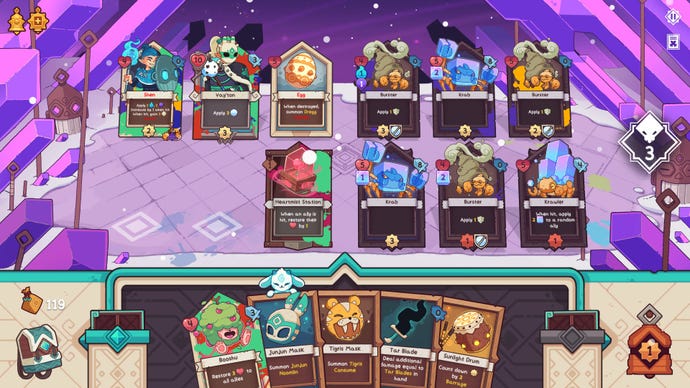
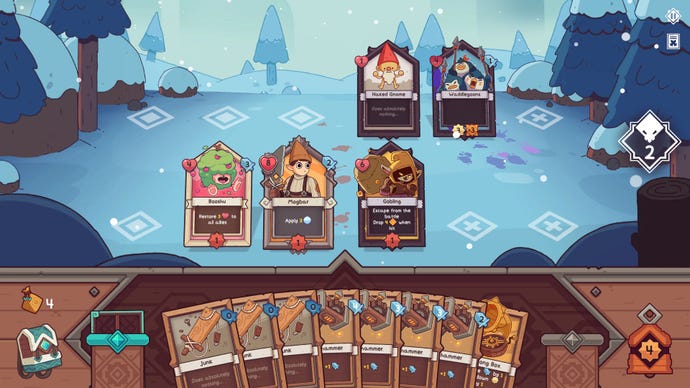

It’s not all down to luck, though. Even the best card pulls couldn’t carry me past the first boss during some late evening plays with my brain switched off - but it affects the spirit of the game. It's not all bad though, it’s a solid element of why I call Wildfrost compelling. It’s that feeling of “I didn’t make it this time, but what about next time?” What if I managed to roll the Berry Siblings combo next time? Or luck into the perfect sacrifice synergy? What if I can build something bigger, better, more absurd?
I deeply enjoy Wildfrost's bombastic builds, but I can’t help but feel that it’s trading in the promise of an exciting next run over making the current one more sustainable. Nevertheless, it’s still a genuinely fun game, with charming details and rewarding tactical combat, so I will, absolutely, be giving it more of my time.
